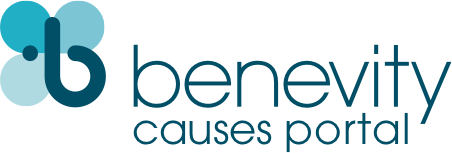YIDDISH BOOK CENTER
This organization has already been registered
Someone in your organization has already registered and setup an account. would you like to join their team?Profile owner : t*******s@y***************r.o*g
Mission Statement
The Yiddish Book Center is a non-profit organization working to tell the whole Jewish story by rescuing, translating and disseminating Yiddish books and presenting innovative educational programs that broaden understanding of modern Jewish identity.
About This Cause
The Yiddish Book Center was founded in 1980 by its current president, Aaron Lansky, then a 24-year-old graduate student of Yiddish literature. In the course of his studies, Lansky realized that untold numbers of irreplaceable Yiddish books—the primary, tangible legacy of 1,000 years of Jewish life in Eastern Europe—were being discarded by American-born Jews unable to read the language of their own Yiddish-speaking parents and grandparents. He organized a nationwide network of zamlers (volunteer book collectors) and launched a concerted campaign to save the world’s remaining Yiddish books before it was too late. When the Center began, experts estimated that 70,000 Yiddish books were still extant and recoverable. The Center’s young staff surpassed that number in six months, and went on to recover more than a million volumes – some lovingly handed to them by their original owners, others rescued at the last minute from demolition sites and dumpsters. We’ve found books in the United States, Canada, Mexico, Cuba, Venezuela, Chile, Uruguay, Argentina, England, France, South Africa, Australia, and other countries around the world. Even at this late date we continue to collect thousands of additional volumes each year. We never envisioned the Yiddish Book Center as a genizah, a static storehouse for old books. Rather, our goal from the outset was to place old volumes into the hands of new readers. We’ve drawn on our vast duplicate holdings to distribute books to students and scholars, and to establish or strengthen collections at more than 600 research libraries in 26 countries. In 1997 we took a giant step forward with the establishment of the Steven Spielberg Digital Yiddish Library. In 2009 we placed our first 11,000 digitized titles online, free of charge. They’ve since been downloaded 300,000 times! The majority of Yiddish books are now safe and accessible. (In an article about our work, The New York Times observed that “proportionally, Yiddish is now the most in-print literature on the planet.”) Even as we continue to rescue and digitize books, we’re undertaking a challenge that is more formidable still: sharing the language, content, context, and literary and cultural progeny of the books we’ve saved with new generations. Our initiatives include education, translation, publications, oral history, exhibits, and public programs. When we founded the Yiddish Book Center in 1980, most Jewish leaders insisted that “Yiddish is dead.” Fortunately, 30,000 people disagreed: they signed up as members and built the Yiddish Book Center into one of the largest and most vibrant Jewish cultural organizations in the world today. In 1997 we opened the Harry and Jeanette Weinberg Building, set on a 10-acre apple orchard at the edge of the Hampshire College campus in Amherst, Massachusetts. Twelve years later we made room for growing educational programs with construction of the adjacent Kaplen Family Building. Architect Allen Moore’s design for both buildings echoes the rooflines of an East European shtetl (Jewish town). Unlike their architectural forbears, however, our buildings are bright, airy and green – heated and cooled by geothermal power. Today, the Yiddish Book Center – an organization that began by rescuing dusty books – is attracting unprecedented numbers of young people, including students, interns, and fellows. It’s now a truism that if you want to hire Yiddish-speaking staff, you look for people under the age of 30. That’s an astonishing transformation in just three decades. It furthers the Center’s commitment to bringing the “flip side” of Jewish life – the too-often overlooked constellation modern Jewish literature and culture – to new generations. As we enter our fourth decade, our optimism and determination have never been greater.
